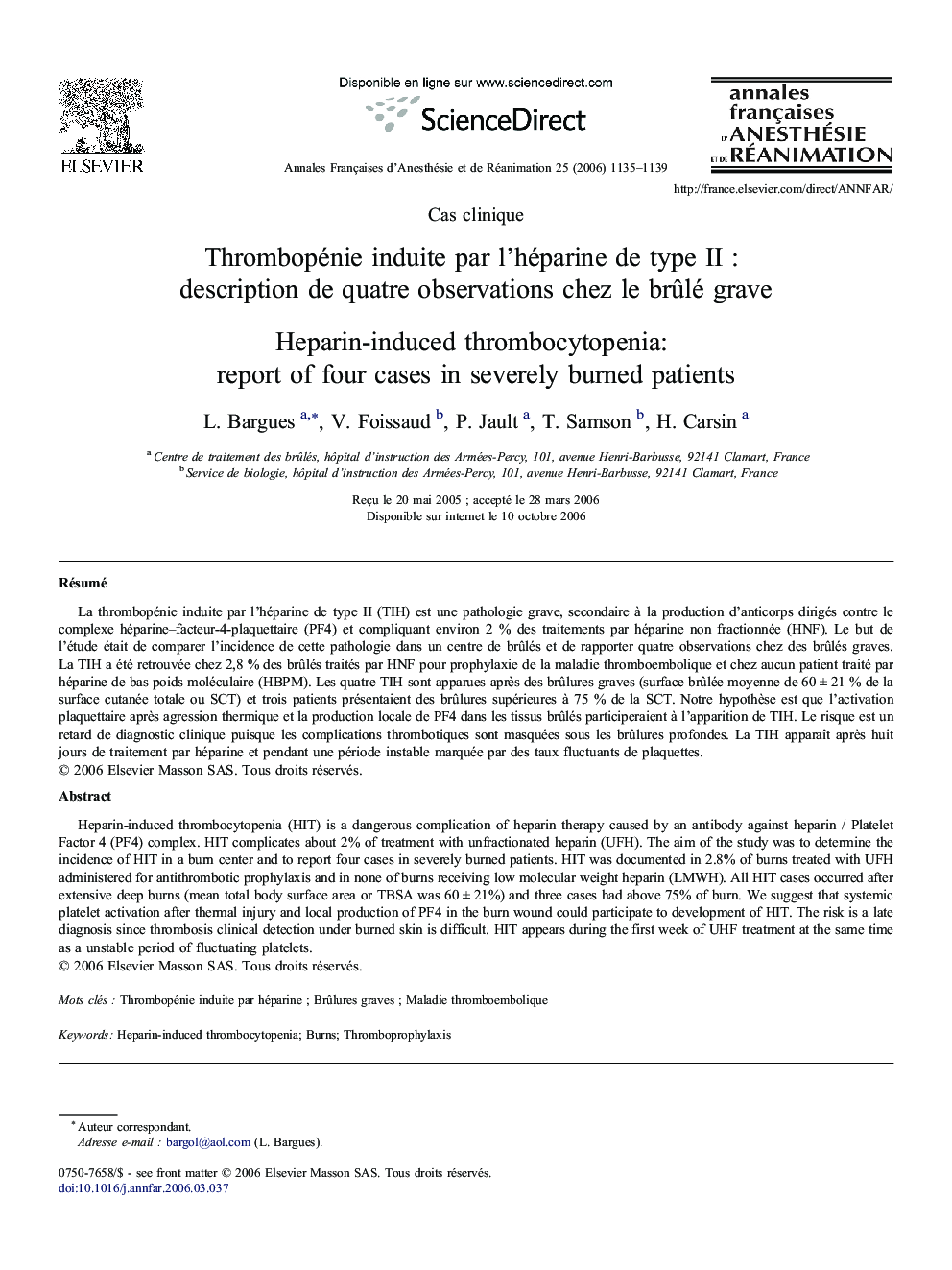| کد مقاله | کد نشریه | سال انتشار | مقاله انگلیسی | نسخه تمام متن |
|---|---|---|---|---|
| 2746921 | 1567188 | 2006 | 5 صفحه PDF | دانلود رایگان |

RésuméLa thrombopénie induite par l'héparine de type II (TIH) est une pathologie grave, secondaire à la production d'anticorps dirigés contre le complexe héparine–facteur-4-plaquettaire (PF4) et compliquant environ 2 % des traitements par héparine non fractionnée (HNF). Le but de l'étude était de comparer l'incidence de cette pathologie dans un centre de brûlés et de rapporter quatre observations chez des brûlés graves. La TIH a été retrouvée chez 2,8 % des brûlés traités par HNF pour prophylaxie de la maladie thromboembolique et chez aucun patient traité par héparine de bas poids moléculaire (HBPM). Les quatre TIH sont apparues après des brûlures graves (surface brûlée moyenne de 60 ± 21 % de la surface cutanée totale ou SCT) et trois patients présentaient des brûlures supérieures à 75 % de la SCT. Notre hypothèse est que l'activation plaquettaire après agression thermique et la production locale de PF4 dans les tissus brûlés participeraient à l'apparition de TIH. Le risque est un retard de diagnostic clinique puisque les complications thrombotiques sont masquées sous les brûlures profondes. La TIH apparaît après huit jours de traitement par héparine et pendant une période instable marquée par des taux fluctuants de plaquettes.
Heparin-induced thrombocytopenia (HIT) is a dangerous complication of heparin therapy caused by an antibody against heparin / Platelet Factor 4 (PF4) complex. HIT complicates about 2% of treatment with unfractionated heparin (UFH). The aim of the study was to determine the incidence of HIT in a burn center and to report four cases in severely burned patients. HIT was documented in 2.8% of burns treated with UFH administered for antithrombotic prophylaxis and in none of burns receiving low molecular weight heparin (LMWH). All HIT cases occurred after extensive deep burns (mean total body surface area or TBSA was 60 ± 21%) and three cases had above 75% of burn. We suggest that systemic platelet activation after thermal injury and local production of PF4 in the burn wound could participate to development of HIT. The risk is a late diagnosis since thrombosis clinical detection under burned skin is difficult. HIT appears during the first week of UHF treatment at the same time as a unstable period of fluctuating platelets.
Journal: Annales Françaises d'Anesthésie et de Réanimation - Volume 25, Issues 11–12, November–December 2006, Pages 1135–1139